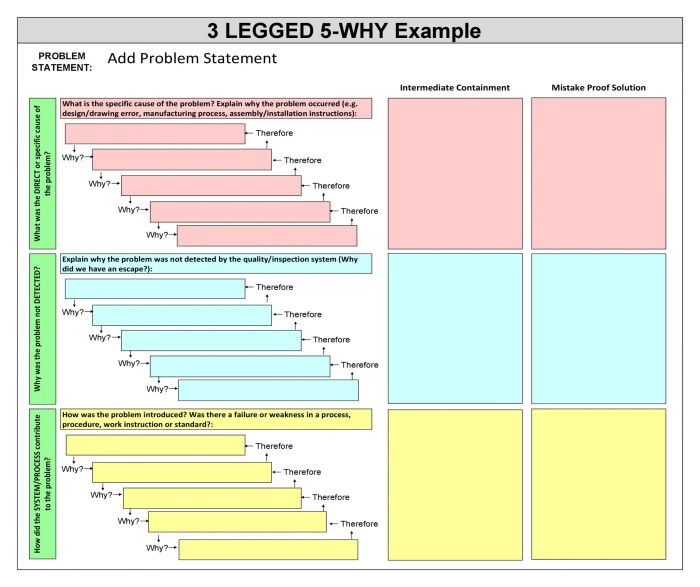Building habit will lot less painful with these 4 simple techniques. This isn’t about willpower battles or overnight transformations. It’s about understanding the psychology behind habit formation and employing practical strategies to make positive changes stick. We’ll delve into the science of habits, explore common pitfalls, and equip you with actionable techniques to build better routines, from productivity boosts to improved well-being.
This post will explore the science of habit formation, identify common obstacles, and offer four practical techniques to ease the process. We’ll also provide examples, step-by-step guides, and a table to compare the methods. Get ready to build those good habits with less struggle!
Understanding Habit Formation

Habits are ingrained behaviors that become automatic over time, significantly influencing our daily lives. They range from the mundane, like brushing our teeth, to the more impactful, like managing our finances or pursuing our goals. Understanding the psychological mechanisms behind habit formation is crucial for building positive habits and overcoming negative ones.Habit formation is a complex process involving the interplay of various psychological mechanisms.
It’s not simply about repetition; it’s about the brain’s reward system and its tendency to seek patterns and efficiency. This process, often described as forming neural pathways, involves associating specific cues with specific responses, eventually leading to automatic actions.
The Stages of Habit Development
Habit development progresses through distinct stages, from initial exposure to a stimulus to an automatic response. Understanding these stages can help in designing strategies for habit formation and modification. The stages are often depicted as a loop, emphasizing the cyclical nature of habit formation.
- Cue Recognition: The initial exposure to a stimulus or trigger initiates the habit loop. This cue, whether internal (like hunger) or external (like a certain time of day), signals the brain to anticipate a specific action. For instance, the sight of a gym bag might be a cue for a workout routine.
- Routine Performance: The actual action or behavior itself. This is the part of the habit loop that is often repeated and eventually becomes automatic. Continuing the gym example, the routine would involve going to the gym, lifting weights, or engaging in other workout activities.
- Reward Perception: The brain’s reward system is activated by the consequences of the routine. This could be a feeling of accomplishment, physical satisfaction, or emotional well-being. The reward reinforces the connection between the cue and the routine, making the habit more likely to be repeated in the future. In the gym example, the reward could be increased energy levels, improved mood, or simply the feeling of accomplishment after a good workout.
The Role of Repetition and Reinforcement
Repetition plays a critical role in solidifying habits. The more frequently a cue-routine-reward loop is repeated, the stronger the neural pathways become, leading to an automatic response. Reinforcement, in turn, strengthens the connection between the cue and the response. Positive reinforcement, like a sense of accomplishment, further motivates repetition. Negative reinforcement, such as relief from stress, can also contribute to habit formation.
Types of Habits, Building habit will lot less painful with these 4 simple techniques
Habits can be categorized based on their impact. Understanding the nature of a habit—whether positive or negative, productive or unproductive—is crucial for determining strategies for change.
- Positive Habits: These habits contribute to well-being and personal growth. Examples include regular exercise, healthy eating, and daily mindfulness practices. They improve overall quality of life.
- Negative Habits: These habits detract from well-being and personal growth. Examples include procrastination, excessive social media use, and unhealthy eating habits. They often result in detrimental consequences.
- Productive Habits: These habits contribute directly to achieving goals and objectives. Examples include time management strategies, goal setting, and prioritizing tasks. They directly enhance productivity.
- Unproductive Habits: These habits hinder progress and achievement. Examples include procrastination, lack of organization, and avoiding difficult tasks. They impede progress toward goals.
The Habit Loop Model
A simple model illustrating the habit loop is crucial for understanding the cyclical nature of habit formation. The loop emphasizes the interconnectedness of cues, routines, and rewards.
A cue triggers a routine, leading to a reward. This reward reinforces the association, making the habit more automatic and likely to be repeated.
| Component | Description |
|---|---|
| Cue | A trigger or stimulus that initiates the habit loop. |
| Routine | The behavior or action itself. |
| Reward | The consequence or outcome that reinforces the habit. |
Identifying Pain Points in Building Habits
Building new habits can feel like climbing a mountain. While the rewards are significant, the journey often involves navigating treacherous terrain. Understanding the obstacles that commonly derail habit formation is crucial for developing strategies to overcome them. This section will delve into common pitfalls, emotional barriers, and the role of procrastination and self-doubt in the habit-building process.Identifying the specific reasons why a habit isn’t sticking is the first step toward fixing it.
By understanding these common struggles, you can develop tailored solutions that work for you. Knowing your specific pain points empowers you to create a sustainable plan and stay motivated.
Common Obstacles to Habit Formation
Many factors can hinder the establishment of new habits. These range from practical challenges to deep-seated psychological issues. Recognizing these obstacles is the first step toward overcoming them.
- Lack of Clarity and Specificity: Vague goals, like “exercise more,” lack the concrete steps needed to translate intention into action. A specific goal, such as “walk for 30 minutes, three times a week,” is much more likely to be achieved.
- Inadequate Planning: A lack of planning often leads to missed opportunities and a sense of overwhelm. A structured approach with realistic timelines and potential setbacks built into the plan makes the process more manageable.
- Poor Time Management: Existing commitments and responsibilities often crowd out the time needed to establish new habits. Prioritizing and scheduling time for new habits is essential for success.
- Lack of Support Systems: A lack of accountability and encouragement from friends, family, or a support group can significantly impact motivation and adherence to a new habit.
Interference from Existing Habits
Existing habits can act as powerful barriers to forming new ones. A pattern of late-night snacking, for example, can make it difficult to adopt a healthy eating habit. Understanding these competing patterns is crucial for success.
- Competing Priorities: A strong existing habit, like watching television after dinner, can make it difficult to replace that time with something new, such as reading.
- Unconscious Behaviors: Often, the reasons behind a lack of progress are deeply ingrained habits that are difficult to identify. A subconscious resistance to change, fueled by fear or discomfort, can significantly hinder progress.
- Emotional Associations: Certain habits may be deeply intertwined with emotional responses. For instance, if a person uses a late-night snack as a coping mechanism for stress, that association may make it difficult to break the habit. Identifying these emotional triggers is a key step in creating positive change.
Emotional and Psychological Barriers
Emotional and psychological factors play a critical role in habit formation. Self-doubt, fear of failure, and lack of self-belief can create significant hurdles.
- Fear of Failure: The fear of not succeeding can lead to procrastination and a reluctance to even try new habits. Recognizing and confronting this fear is a crucial step in overcoming it.
- Lack of Motivation: A lack of intrinsic motivation to change can significantly affect progress. Finding the “why” behind a new habit is essential for staying committed.
- Perfectionism: Striving for perfection can lead to a fear of not meeting standards, causing avoidance and frustration. Accepting imperfections and focusing on progress, rather than perfection, is vital.
Procrastination and Self-Doubt in Habit Formation
Procrastination and self-doubt often go hand in hand, hindering the process of habit formation. Overcoming these challenges requires a proactive approach.
- Procrastination: Procrastination can stem from fear of the effort required, a lack of clarity, or a negative self-image. Breaking down tasks into smaller, more manageable steps can help overcome this hurdle.
- Self-Doubt: Self-doubt can manifest as a lack of confidence in one’s ability to succeed. Building self-belief through positive affirmations, celebrating small victories, and seeking support can help combat this.
4 Simple Techniques for Easier Habit Building
Building new habits can feel like climbing a mountain, but it doesn’t have to be a grueling, painful process. With the right approach, incorporating positive routines into your life can be smoother and more enjoyable. This section explores four straightforward techniques that can significantly reduce the discomfort often associated with habit formation.These techniques are designed to address the common challenges of motivation, consistency, and environment that often hinder habit building.
By understanding these strategies and tailoring them to your specific needs, you can make the journey to a more fulfilling and productive you significantly less arduous.
Building good habits doesn’t have to be a torturous journey! These four simple techniques make it significantly less painful. For example, if you want to be wealthy, you should definitely avoid these common money mistakes, like impulsive spending and neglecting your savings. you want wealthy you should avoid these 7 money mistakes Understanding financial pitfalls will greatly enhance your journey towards a more fulfilling and sustainable financial future.
Ultimately, the key to mastering habits lies in strategic planning and a little self-awareness, making the entire process much less painful.
The Power of Micro-Habits
Small, manageable steps are often more sustainable than large, overwhelming goals. The concept of micro-habits involves breaking down a desired habit into exceptionally small, easily achievable actions. This gradual approach reduces the initial hurdle and builds momentum over time.For example, instead of aiming to exercise for an hour every day, a micro-habit approach might involve walking for just five minutes.
This seemingly insignificant step is much easier to incorporate into a busy schedule and creates a positive feedback loop. Over time, these small actions compound, leading to the desired outcome. To implement micro-habits, meticulously define the specific, actionable steps. Start with a ridiculously small increment (e.g., one push-up), and gradually increase the duration or intensity as you gain momentum.
Habit Stacking
Habit stacking is a powerful technique that leverages existing habits to create new ones. This approach links a new habit to an existing one, making the new habit more automatic and less demanding.For instance, if you want to read more, you could link this new habit to an existing one, such as brushing your teeth. Every time you brush your teeth, you also read a few pages.
This association makes the reading habit more ingrained and easier to sustain. Identify a current, reliable habit, and then attach the new habit to it. This could be anything from drinking your morning coffee to arriving at work. Ensure the new habit complements or is compatible with the existing one.
Building good habits doesn’t have to be a painful process! These four simple techniques make it significantly easier. Learning to manage your time effectively is key to forming those habits, and exploring the wisdom of 70 best time management quotes can provide some powerful insights. Ultimately, understanding how to best allocate your time will make establishing those habits a smoother, more enjoyable experience.
The Power of Environment
Your environment significantly influences your habits. A supportive environment makes it easier to adopt new routines, while a challenging one can impede progress. Creating a conducive environment for a new habit is key.For instance, if you want to drink more water, keep a large water bottle visible on your desk. Placing healthy snacks within easy reach can promote healthier eating habits.
By strategically designing your surroundings, you can significantly improve your chances of success. This includes physical changes (e.g., rearranging your workspace) and also mental preparation (e.g., creating a calm and focused atmosphere). Consider how your current environment supports or hinders the desired habits, and adapt it accordingly.
Reward Systems
Reward systems, in their simplest form, incentivize positive behaviors. They introduce a positive reinforcement loop that reinforces the habit. Rewarding yourself for achieving specific milestones can significantly boost motivation and make the process more enjoyable.For example, if your goal is to learn a new language, you might reward yourself with a small treat after each completed lesson. This simple system can make the learning process more engaging and sustainable.
Clearly define the reward, and ensure it aligns with your personal values. Ensure the reward is something you truly value and that it is not overly large or extravagant, to avoid becoming counterproductive.
Comparative Table of Techniques
| Technique | Advantages | Disadvantages |
|---|---|---|
| Micro-Habits | Gradual progress, increased motivation, manageable tasks | Requires patience, potential for slow progress if not carefully planned |
| Habit Stacking | Leverages existing routines, less effort required, high adherence | May not work for all habits, needs strong existing routine |
| Environmental Design | Creates supportive environment, promotes habit integration, enhanced accountability | Requires significant effort to modify environment, potential for resistance |
| Reward Systems | Enhances motivation, promotes enjoyment, reinforces behavior | Potential for over-reliance on rewards, may become counterproductive if rewards are too large |
Implementing the Techniques Effectively: Building Habit Will Lot Less Painful With These 4 Simple Techniques
Putting the four simple habit-building techniques into practice requires careful consideration and a personalized approach. This isn’t about a one-size-fits-all solution; it’s about understanding what works best foryou* and adapting your strategy as needed. Success hinges on consistent application and a willingness to adjust based on your progress and challenges.Effective implementation involves more than just knowing the techniques; it’s about integrating them seamlessly into your daily life.
This involves understanding your unique circumstances, identifying potential obstacles, and developing a proactive plan to overcome them.
Strategies for Daily Integration
Consistency is key to building any habit. To ensure the techniques become a part of your daily routine, think about how you can weave them into existing activities. For example, if your goal is to read more, schedule reading time during your morning commute or while waiting in line. Linking a new habit to an existing one can significantly increase its likelihood of success.
Overcoming Setbacks and Maintaining Motivation
Setbacks are inevitable in the habit-building process. When you encounter a challenge, don’t view it as a failure. Instead, analyze what went wrong, adjust your approach, and try again. This proactive approach, combined with positive self-talk, will help you maintain motivation.
Tracking Progress and Adapting Strategies
Tracking your progress is crucial for identifying patterns and making necessary adjustments. A simple log, a spreadsheet, or even a dedicated app can help you monitor your progress. Review your log regularly to identify areas where you’re excelling and areas needing improvement. Adjusting your strategy based on your progress data allows you to refine your approach, maximizing your chances of success.
Choosing the Right Technique for Specific Habits
A tailored approach to habit building is essential. Consider the nature of the habit you want to establish and the techniques’ suitability. For example, if you want to start a healthy eating habit, “creating a supportive environment” might involve stocking your kitchen with healthy options. If you’re aiming for increased physical activity, “building momentum” could involve setting small, achievable goals.
This table illustrates the potential match-up between habits and techniques:
| Habit | Best Technique | Explanation |
|---|---|---|
| Healthy eating | Creating a supportive environment | Surrounding yourself with healthy foods |
| Exercise | Building momentum | Starting with short, achievable workouts |
| Reading | Rewarding yourself | Rewarding progress to increase motivation |
| Learning a new skill | Chunking | Breaking the skill into smaller, manageable parts |
Step-by-Step Guide for Daily Routine Integration
This structured approach allows you to smoothly integrate the techniques into your routine.
- Identify your habit. Be specific. Instead of “exercise more,” aim for “walk for 30 minutes, three times a week.”
- Select the technique. Consider which technique best aligns with your chosen habit. For example, if the habit is “drink more water,” “creating a supportive environment” could involve placing water bottles strategically throughout your home.
- Plan your daily routine. Incorporate the chosen technique into your daily schedule. If the technique is “rewarding yourself,” plan a small reward after successfully completing your habit.
- Implement the technique. Follow your plan consistently. Stay focused and don’t get discouraged by setbacks.
- Track your progress. Monitor your progress regularly and make adjustments as needed.
Illustrating the Techniques

Embarking on a habit-building journey often feels daunting. Understanding the theory is one thing, but practically applying these principles requires visualization. This section will delve into how the four simple techniques manifest in various scenarios, highlighting their strengths and weaknesses, and demonstrating how to overcome obstacles along the way.This visual exploration allows for a more tangible understanding of how these techniques can be integrated into everyday life, transforming abstract concepts into actionable strategies.
Detailed Descriptions of Images Illustrating Each Technique
The four techniques—habit stacking, the 2-minute rule, the reward system, and the accountability partner—are best understood through visual representations. Imagine an image depicting a daily routine. The habit stacking technique would be illustrated by a schedule where a new habit, like reading, is linked to an existing one, such as brushing teeth. The 2-minute rule is shown by a person quickly performing a small task, such as organizing a desk drawer, immediately after noticing a need.
The reward system is shown by a person receiving a small reward after completing a task, such as a treat after finishing a workout. The accountability partner is represented by two individuals collaborating on a shared goal, such as attending a weekly fitness class together.
Demonstrating Implementation in Different Situations
Different scenarios showcase the versatility of these techniques. An image depicting a busy professional might illustrate how habit stacking can integrate a quick meditation session into their already packed schedule. The 2-minute rule could be exemplified by a student who immediately starts organizing their notes after a class, instead of procrastinating. A reward system could be seen in a child earning stickers for completing chores.
An accountability partner scenario could show two friends motivating each other to pursue a shared fitness goal.
Advantages and Disadvantages of Each Technique
Each technique has its own set of strengths and weaknesses. An image depicting a person feeling overwhelmed by a new habit could highlight the potential disadvantage of habit stacking if the new habit is too complex or the existing habit is already stressful. Another image showcasing a person successfully completing a challenging habit using the reward system could emphasize the positive reinforcement aspect.
Building good habits doesn’t have to be a struggle! These four simple techniques can make the process significantly less painful. For a boost of motivation, check out these 20 inspirational sayings for growth and personal insight, 20 inspirational sayings for growth and personal insight. They’ll remind you that consistent effort leads to lasting change, which is key to building any habit effectively.
A scenario illustrating a lack of commitment from an accountability partner could show the importance of choosing a reliable partner.
Overcoming Obstacles and Setbacks in Habit Building
The habit-building process is rarely smooth. An image of a person struggling with procrastination and self-doubt could illustrate the importance of self-compassion and adjusting strategies. An image showing a person gradually improving their habit through small steps demonstrates the effectiveness of the 2-minute rule and habit stacking in overcoming obstacles. A scenario depicting a person making progress with their accountability partner despite temporary setbacks emphasizes the importance of continuous support.
Different Scenarios Where Techniques Can Be Applied
These techniques transcend specific contexts. An image of a student effectively using habit stacking to manage their study time, or an image of a parent employing the reward system to encourage healthy eating habits in their child, demonstrates the wide range of applications. Visualizations of these techniques can be seen in various settings, including professional environments, personal relationships, and educational settings.
Applying the Techniques to Specific Examples
Putting the four simple techniques into action feels surprisingly straightforward. The key is to tailor them to your specific goals and acknowledge the unique challenges each habit presents. This section dives into real-world applications, demonstrating how these techniques can be applied to various aspects of life, from physical well-being to personal finance.This exploration will illustrate how the techniques are applicable to different habit types, showing how you can adapt them to suit your individual needs and circumstances.
It will also reveal how the techniques work together to create a cohesive approach to habit formation.
Building Positive Habits: Exercise and Healthy Eating
Implementing a new exercise routine or healthy eating plan often encounters initial resistance. By breaking down the habit into smaller, manageable steps, you make it less daunting. For exercise, instead of aiming for an hour-long gym session daily, start with a 15-minute walk. Gradually increase the duration and intensity as you progress. Healthy eating can follow a similar pattern.
Instead of eliminating all processed foods, try replacing one processed meal with a healthier option. The key is consistent, gradual change. Using the “Habit Stacking” technique, pair your exercise with a pre-existing routine. For example, immediately after getting home from work, take your workout clothes out. This links a new habit to an existing one, increasing the likelihood of success.
Breaking Negative Habits: Procrastination and Overeating
Procrastination and overeating often stem from a combination of factors. Addressing these habits involves identifying the underlying causes. For procrastination, this might be perfectionism or fear of failure. The “Habit Stacking” technique can be utilized. Pair your procrastination trigger with a more productive task.
For example, before starting that daunting project, complete a small, manageable task. The “Reward System” can help motivate you to overcome these challenges. Celebrate small wins to reinforce the positive behavior and reduce feelings of overwhelm. For overeating, it’s crucial to understand the emotional triggers. The “Environment Control” technique can be helpful.
Remove tempting foods from your immediate environment. Choose healthy snacks and meals in advance, thus minimizing impulsive decisions.
Building Good Study Habits
Effective study habits are essential for academic success. These habits can be cultivated using a structured approach. Identify the times of day when you are most focused and schedule study sessions during those times. The “Habit Stacking” technique can help create consistency. For example, immediately after waking up, do a quick review of your study plan.
The “Environment Control” technique is important here too. Create a dedicated study space free from distractions. By utilizing these techniques, you can establish a routine that maximizes your learning potential.
Developing Good Financial Habits
Sound financial habits are vital for long-term financial security. Establishing these habits requires discipline and consistency. The “Reward System” can be a great motivator. For instance, reward yourself with a small treat after meeting a savings goal. Set realistic financial goals and create a budget.
The “Environment Control” technique is important here too. Use a dedicated budgeting app to track your expenses. This can help you identify areas where you can cut back and save more.
Building Good Sleeping Habits
Adequate sleep is crucial for physical and mental well-being. Building good sleeping habits involves establishing a consistent sleep schedule. The “Habit Stacking” technique can be useful here. Associate a relaxing activity, like reading a book, with your bedtime routine. The “Environment Control” technique can be applied to create a conducive sleep environment.
Make sure your bedroom is dark, quiet, and cool. By following these techniques, you can develop a sleep routine that supports your overall health and well-being.
Structuring the Content for Readability
This section focuses on presenting the four habit-building techniques in a clear, easily digestible format. A well-structured article enhances comprehension and makes the information more engaging for readers. The goal is to present the material in a way that empowers readers to effectively apply these techniques to their own lives.Effective communication is crucial when sharing knowledge. This section details a structured approach to present the habit-building techniques, including tables, concise paragraphs, and engaging headings, ensuring clarity and readability.
Techniques Summary Table
This table provides a concise overview of the four techniques, outlining their core principles, examples, and key takeaways.
| Technique Name | Description | Examples | Key Takeaways |
|---|---|---|---|
| Habit Stacking | Associating a new habit with an existing, already established routine. | Brushing teeth -> checking email; finishing a workout -> meditating. | Leveraging existing routines for easier habit adoption. |
| Habit Swarming | Simultaneously implementing multiple, related habits to maximize impact and momentum. | Reading a book, journaling, and exercising together as part of a daily routine. | Combining related habits for a more impactful routine. |
| The Two-Minute Rule | Breaking down a habit into very small, manageable steps (typically under two minutes). | Starting a new writing habit by writing a single paragraph, not a full essay. Learning a new language by practicing a few words each day. | Overcoming the intimidation factor of large tasks by starting small. |
| Habit Tracking | Monitoring progress through visual tracking tools, like calendars or journals. | Using a spreadsheet or app to track daily progress, or marking completed tasks on a calendar. | Provides clear feedback on progress, enabling adjustments as needed. |
Strengths and Weaknesses of Each Technique
This section assesses the advantages and disadvantages of each habit-building technique, alongside relevant case studies.
Habit Stacking is particularly effective for integrating new habits into existing routines, leveraging the momentum of established behaviors. However, it might not be suitable for habits that require significant cognitive effort or motivation. For example, a person who already exercises regularly might find stacking a new meditation habit onto their workout routine relatively easy. However, stacking a new habit onto a routine that is not consistently followed could be problematic.
Habit Swarming can create substantial positive changes when multiple related habits are tackled simultaneously. This method works well for improving overall well-being, such as improving diet, exercise, and sleep patterns together. However, the challenge lies in ensuring that each habit within the swarm is equally supported and sustainable. For example, someone might find it difficult to maintain a habit swarm if they struggle with one of the habits within the group.
The Two-Minute Rule effectively addresses the initial hurdle of starting new habits. It’s particularly useful for tasks that seem daunting. However, consistency can be challenging. For instance, if someone decides to write a few sentences daily, but finds it hard to keep this up, it might not lead to the desired results.
Habit Tracking offers clear visual feedback, which can motivate continued effort. Visual representation can provide a strong sense of accomplishment. However, tracking alone isn’t sufficient for long-term habit formation. It’s more of a supportive tool rather than a primary driver of habit creation.
Conclusive Thoughts
In conclusion, building habits doesn’t have to be a daunting task. By understanding the science behind habit formation, identifying common pain points, and implementing the four simple techniques discussed, you can create positive changes in your life with less discomfort. Remember, consistency and patience are key. Small, sustainable changes lead to significant results over time. Now go forth and build those amazing habits!











